
Prof. Ma Hui and Associate Researcher Liao Ran from Tsinghua SIGS recently returned to Shenzhen after completing a 20-day scientific expedition on the“Discovery One” research vessel from March 10 to April 2.
The Chinese Academy of Sciences (CAS) research vessel used for the TS16 voyage was loaded with a “Deep Sea Warrior” submersible that performed field inspection and sample collection of seabed garbage, cold water corals, seamount ecology, sediments and rocks in the South China Sea. Scientists on the voyage were from Tsinghua University, Sun Yat-sen University, Zhejiang University, Institute of Deep-sea Science and Engineering, CAS, and the MNR Second Institute of Oceanography.
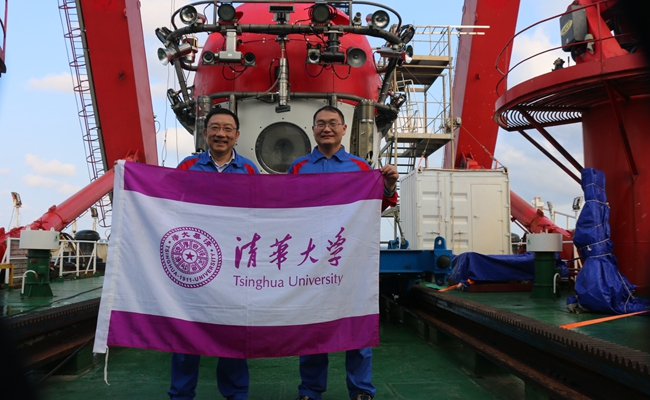
Ma Hui (left) and Liao Ran with the "Deep Sea Warrior" submersible
The goal of the 20-day scientific expedition was to investigate the ecology, geology and environmental pollution of seamounts and canyons in the South China Sea. The team carried out deep-dive investigations and sampling of plastic pollution and seamount ecosystems, and completed deep-sea intelligent projects and sea trials of key equipment.
Professors Ma Hui and Liao Ran used a self-developed Mueller microscope to examine polarization characteristics of deep sea microorganisms, seabed sediments, and captured images of suspended particles and other seafloor targets with a polarization camera. Both also completed their first dive, reaching a depth of 4300 meters. Through field inspection, they were able to witness the topography of the seafloor, sediments, large sea creatures and other underwater scenes.
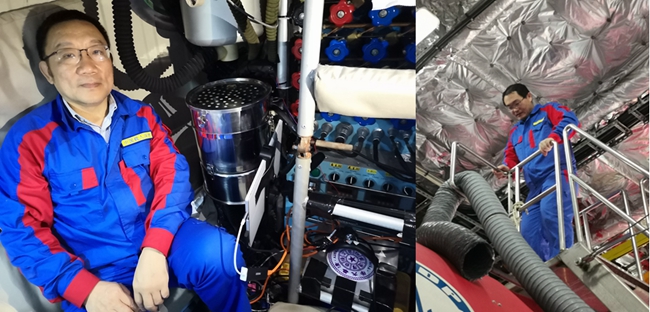
Profs. Ma Hui (left) and Liao Ran preparing for their dives
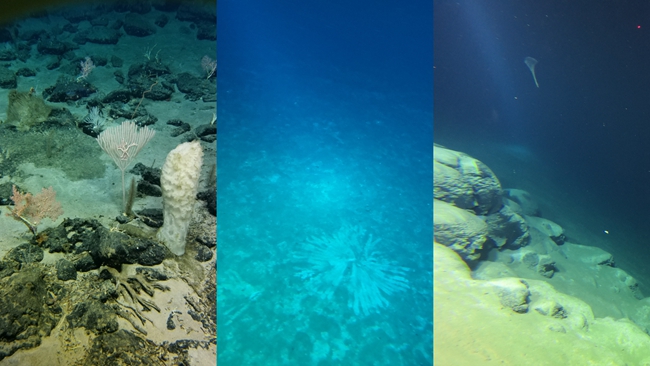
Underwater scenes taken by Ma Hui and Liao Ran
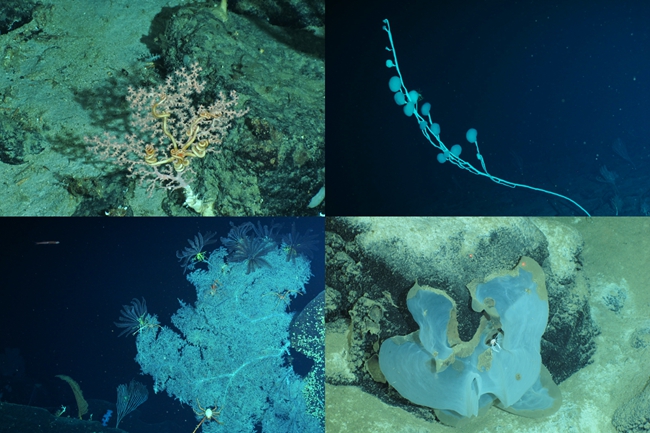
Underwater scenes taken by Ma Hui and Liao Ran
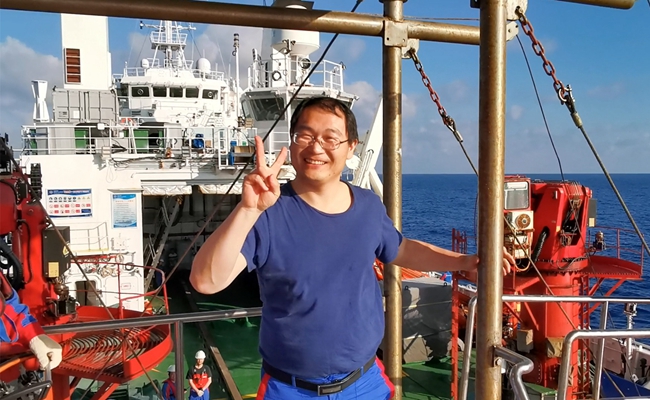
Liao Ran exiting the cabin after completing his dive
In the course of this scientific expedition, scientists on board also witnessed the discovery of a "Whale fall". Whale fall refers to the rich ecosystem formed when a whale sinks into the ocean floor after its death. Similar to hydrothermal fluids and cold springs, they are known as oases in the deep sea, and are able to support diverse marine biological communities.
Natural whale falls are very rare, and have only been discovered in around 50 sites around the world. This is the first time that a whale fall is discovered in the South China Sea, and also by Chinese scientists.
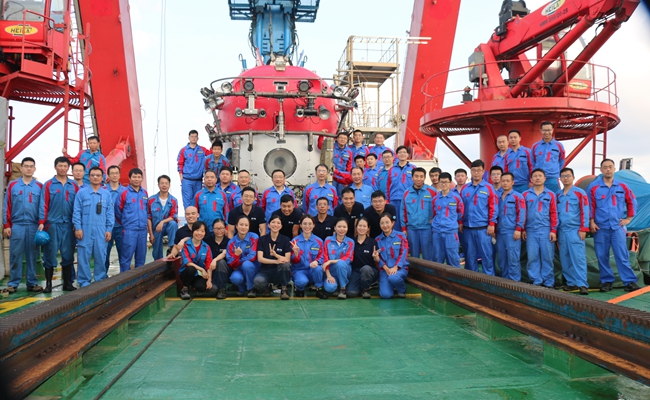
A group photo of the research team on the TS16 voyage
The TS16 voyage in the South China Sea marks the sixth marine expedition that Tsinghua SIGS (previously Tsinghua Graduate School at Shenzhen) has participated. Marine engineering and technology is one of seven theme areas of the graduate school, which will focus on the construction of four disciplines: deep sea engineering, deep sea technology, coastal engineering and technology, and marine ecological environment.
Photos by Liao Ran
Cover design by Tang Huiwen, supervised by Wen Xueyuan
Edited by Karen Lee


